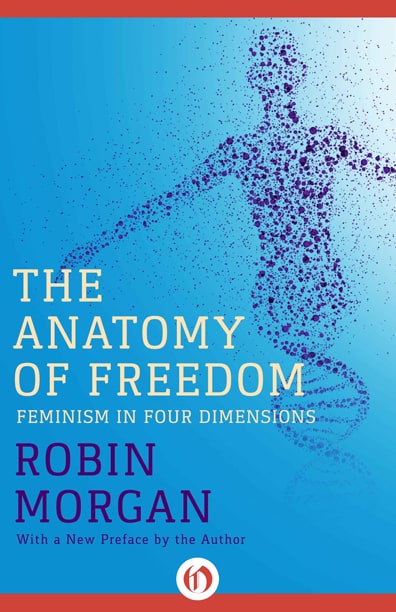The Anatomy Of Freedom
Feminism in Four Dimensions
“Let this book happen to you.”
Charlotte Perkins Gilman’s “The Yellow Wallpaper” told by Neil deGrasse Tyson, while Amy Poehler eats popcorn—enjoy yourself.

W.W. Norton & Company, 1982 & 1994
“Truly a book of great interest, The Anatomy of Freedom sheds genuine new light on the ‘woman question.’ Bravo!” —SIMONE DE BEAUVOIR
“In this book, readers will find yet another manifestation of those imaginative and analytical powers that have characterized Robin Morgan as one of our most significant thinkers, whose work never fails to challenge us toward greater precision, scope, and daring.” —MARY DALY
“This is one of the most wonderful reading experiences I have had in a long time. I have been in such good company—a courageous woman who has educated me and shown me how important my choices in life are, not only for my own freedom, but also for those who still don’t have the privilege of choice.” —LIV ULLMAN
First published in 1982 by Doubleday (and in paper by Anchor) with the sonorous subtitle “Feminism, Physics, and Global Politics,” this book remained in print for almost 15 years—inspiring two academic conferences and numerous women’s studies courses—then was snapped up for a second edition, a paperback original, by Norton. The second edition bears the subtitle “Feminism in Four Dimensions,” and also boasts a new foreword and afterword by the author.
From Morgan’s introduction: “Feminism has been perceived as a politics and movement relating specifically to the rights of women. If this were the totality of feminism’s concern, that would be sufficient cause for its validity and vitality. But feminism is a vision as important and transformative to men as to women—and one crucial to the continuation of sentient life on this planet. It’s time we comprehended feminism in its full, holographic nature. . . .”
Characteristically, Morgan weaves her own string theories together—themes of technological balance, sub-realities of dreams and the subconscious, sexual passion, gender, race, global politics, family structure, economics, environment, children’s rights, aging—all connected via the examination and demystification of theoretical physics (which she makes amazingly coherent and accessible). The entirety is indeed more than its parts: relativity and interrelationship become the central analogy for feminism, and for dynamic, never static, freedom.


